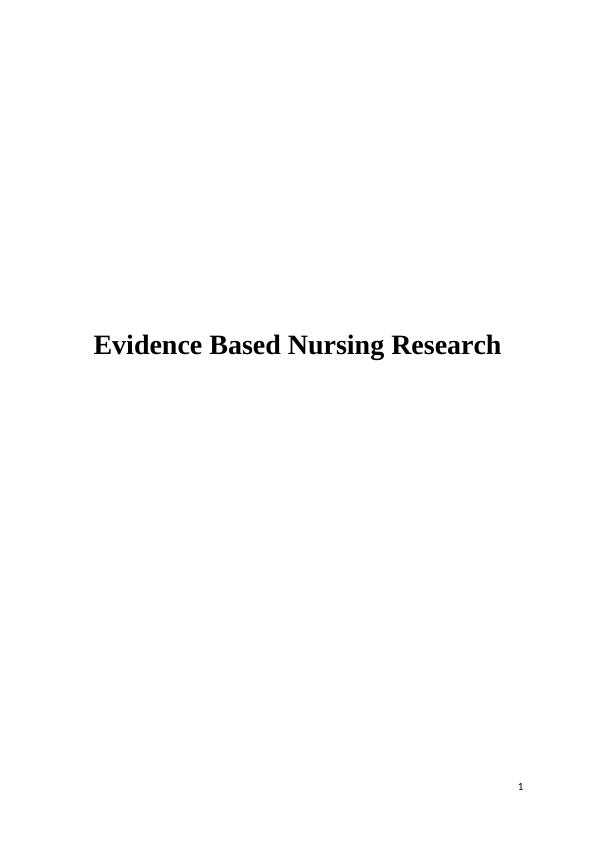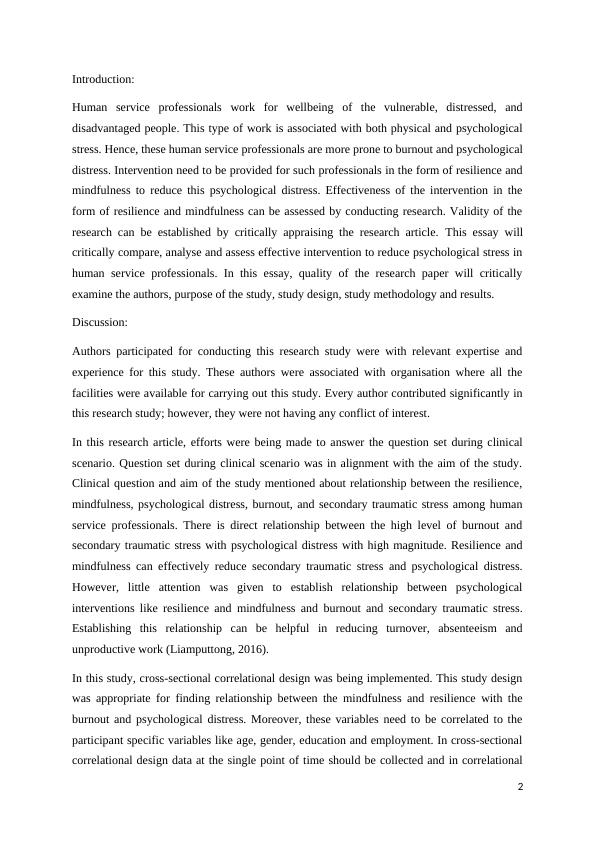Effective Intervention to Reduce Psychological Stress in Human Service Professionals: A Critical Appraisal
Critically appraise a research paper on the relationship between stress and resilience in health science students.
6 Pages1735 Words107 Views
Added on 2023-06-11
About This Document
This essay critically compares, analyses and assesses effective intervention to reduce psychological stress in human service professionals. The study design, methodology and results are evaluated to establish the validity of the research. The effectiveness of resilience and mindfulness interventions is assessed through a cross-sectional correlational design. The study concludes that cultivating resilience and mindfulness can reduce psychological distress among human service professionals.
Effective Intervention to Reduce Psychological Stress in Human Service Professionals: A Critical Appraisal
Critically appraise a research paper on the relationship between stress and resilience in health science students.
Added on 2023-06-11
ShareRelated Documents
End of preview
Want to access all the pages? Upload your documents or become a member.
Exploring resilience and mindfulness as preventative factors for psychological distress
|7
|1716
|183
Critical Appraisal of Evidence-Based Practice and Published Literature
|8
|1947
|314
Psychology Assignment | Psychological Distress
|9
|1609
|53
Effectiveness of Resilience and Mindfulness in Preventing Burnout among Human Service Professionals
|9
|1747
|236
Exploring Resilience and Mindfulness as Preventative Factors for Psychological Distress Burnout and Secondary Traumatic Stress Among Human Service Professional
|7
|1700
|307
Critical Appraisal of Evidence PDF
|8
|1741
|86



